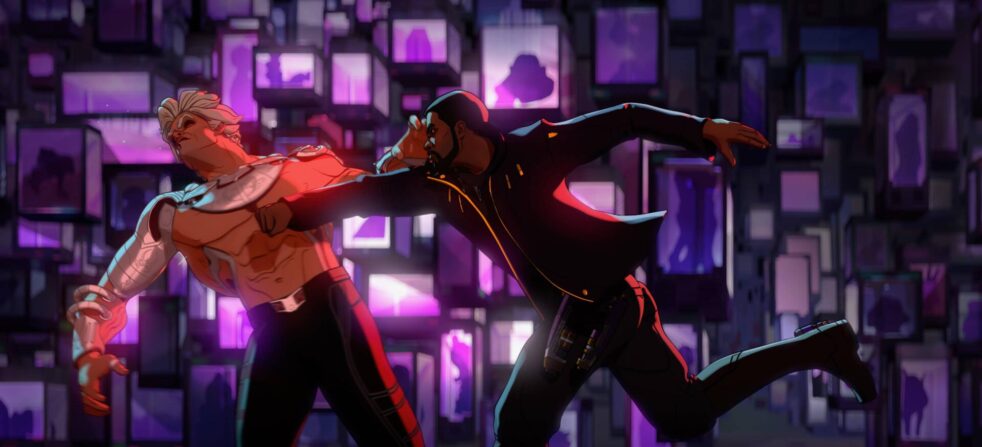Our Take: 4 Stars
With new weekly installments on Wednesdays, “What If…?” is Marvel’s newest addition to its collection of television series released on Disney+.
Following in the footsteps of critically acclaimed shows like “Wandavision” and “Loki,” “What If…?” offers an animated reimagining of what would’ve happened in the Marvel Cinematic Universe if key events were changed.
As of this writing, six of the eight total episodes of the series have been released, and in these six episodes, Marvel has managed to hook audiences. “What If…?” is a remarkably well-done series that allows fans to reconnect with their favorite characters while exploring the Marvel Cinematic Universe outside of its regular scope.
All of the episodes are vastly different, which is expected for the format of the show, but there are two underlying characteristics that set “What If…?” apart from Marvel’s other projects: its animation style and storylines.
“What If…?” uses an art style traditionally referred to as cel shading, a form of animation that is used to make three dimensional characters look more two dimensional. Marvel has used it in past projects to a mixed response since the style is often criticized for being choppy and stilted.
But the opposite is true in “What If…?” The comic-book art style of cel shading allowed for a smooth transition from the live-action actors of the Marvel Cinematic Universe to their animated counterparts, while also maintaining fluidity in its characters and action sequences. Furthermore, the style of cel shading allows for some truly beautiful shots of familiar landscapes from the Marvel Cinematic Universe.
“What If…?” does not succeed purely on its aesthetics, however. The storytelling in the series is phenomenal as well. By colliding universes and plotlines together, Marvel is able to tell rich stories, full of familiar characters in completely unfamiliar settings.
The episodic format of the show also allows Marvel to set up a premise where the universe resets in every new episode, giving the franchise the freedom to make bold choices they would never make in their canonical movies and shows. Episodes like “What If… Doctor Strange Lost His Heart Instead of His Hands,” where Dr. Strange not only destroys the universe but is then forced to grieve his own hubris and lost love, allow Marvel to demonstrate its ability to tell tales of tragedy, not just heroic triumph.
However, in many ways, the episodic format of “What If…?” is also its downfall. It is impossible to construct a new universe, tell an entire story, and resolve it in thirty minutes. Because of this, many of the episodes feel unfinished and leave viewers feeling like they had only watched half of a movie. For this reason, an otherwise five-star show becomes a four-star experience.
This issue with the endings could have easily been resolved by making some of the conflicts in the episodes less complicated. For example, in “What If…Killmonger Rescued Tony Stark?” the conflict unfolds for the better part of the episode, and we aren’t introduced to the resolution until mere minutes before the credits. While the added complexity allows for a more complete universe, at some point, it simply detracts from the story at the heart of the episode. Despite its flaws, “What If…?” may be one of Marvel’s best Phase IV ventures because it does what the franchise has always done best — tell us new stories about old characters we know and love.
